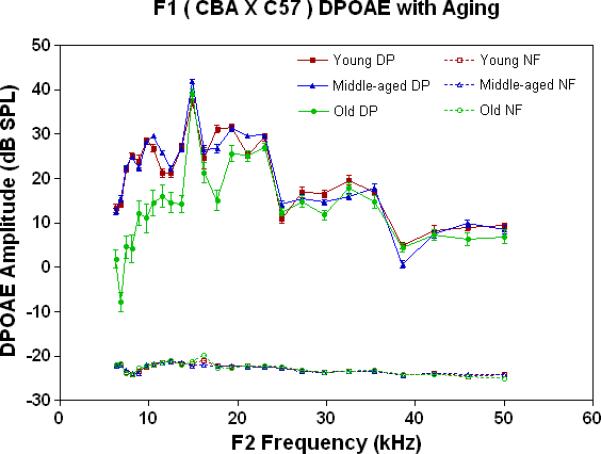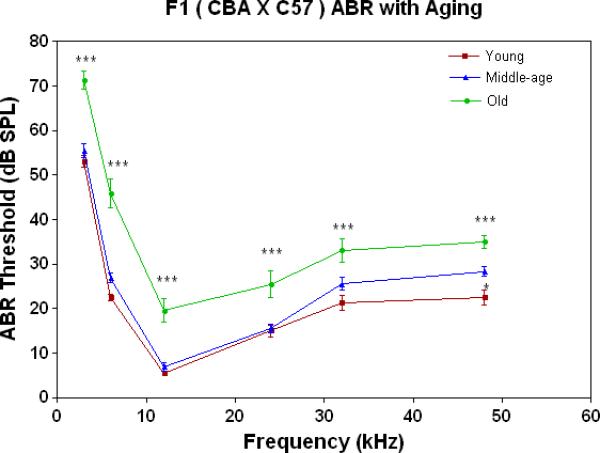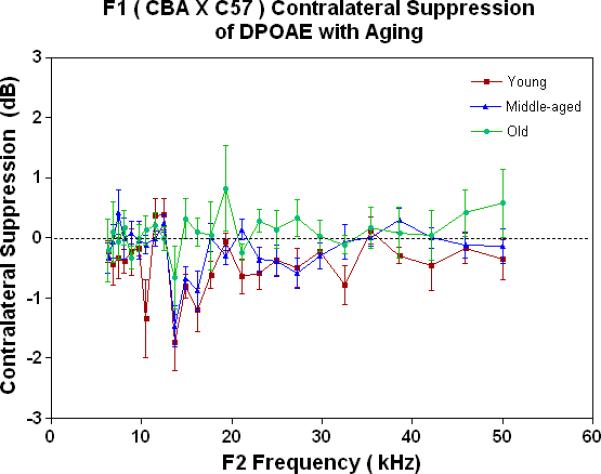Figure 1.



Peripheral hearing measures show surprising stability with age for the F1, whereas the auditory efferent feedback system showed modest responses. A) DPOAE amplitudes were robust and quite stable with age for the F1, except for declines in the lower frequencies in the oldest subject group. Noise floors for these data are given in Figs. 2A-2C, and are all below −15 dB SPL. The age main effect was statistically significant: F=336.8, df=2, p<0.0001. B) ABR thresholds for young adults and middle age mice were quite similar, except for an increase at the highest frequency tested in middle age for the F1. In contrast, the old F1 thresholds were significantly higher than the younger animals at all frequencies tested. The age main effect was statistically significant: F=149.2, df=2, p<0.0001. For the post-hoc Bonferroni pairwise comparisons: *p<0.05; ***p<0.001. C) The young adult F1 shows a modest amount of CS across the mouse frequency range of hearing. Declines begin to occur in middle age, and by old age, very little CS is observed along with a small amount of contralateral enhancement (+ CS). The age main effect was highly significant: F=18.6, df=2, p<0.0001, and the post-hoc pairwise comparisons were not.
